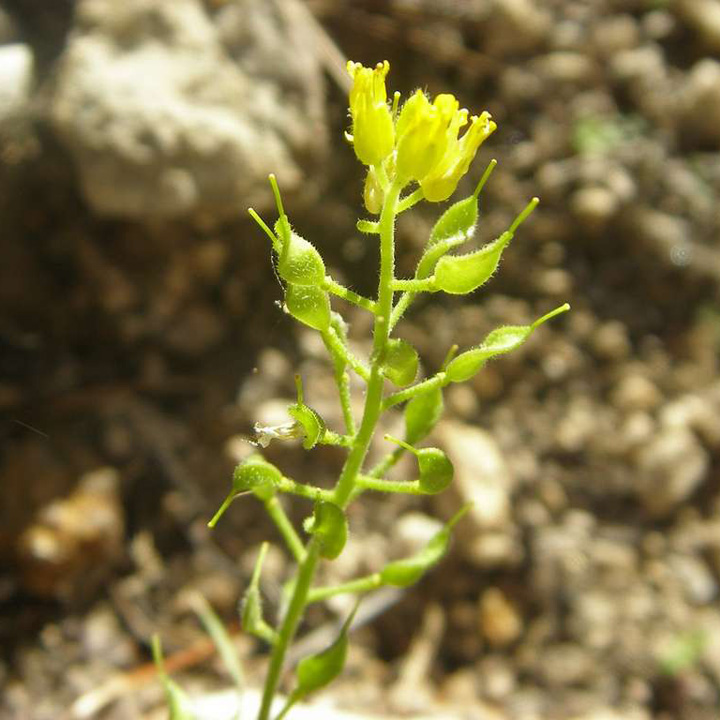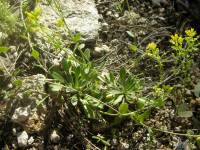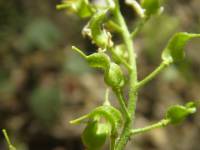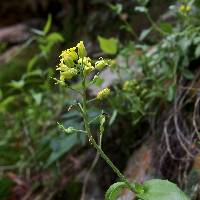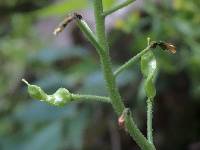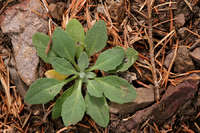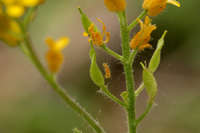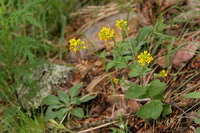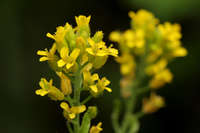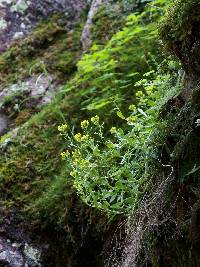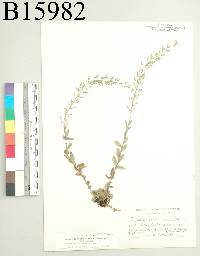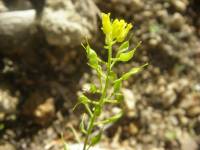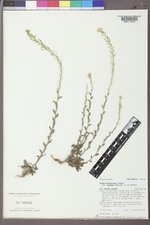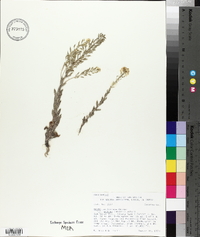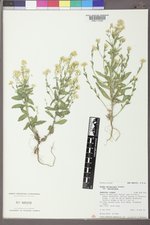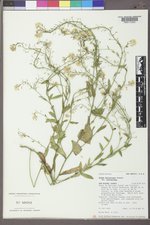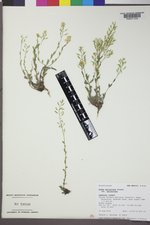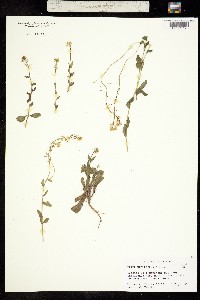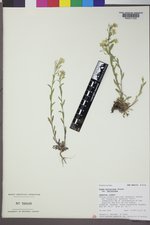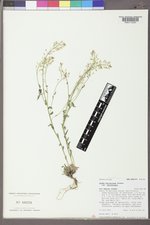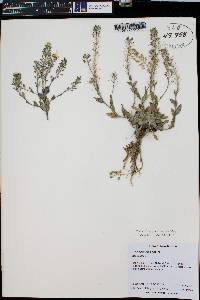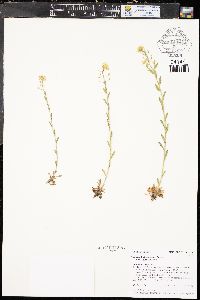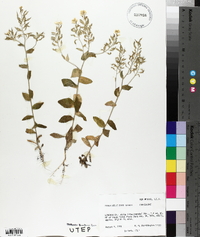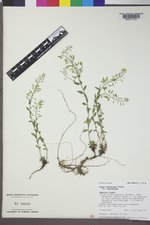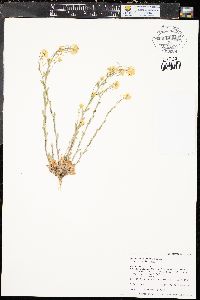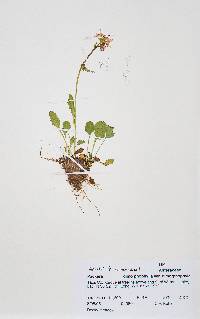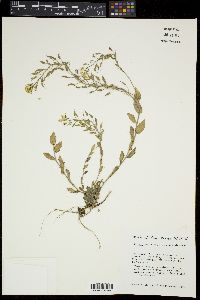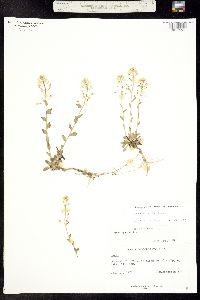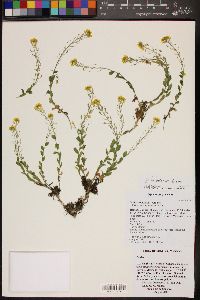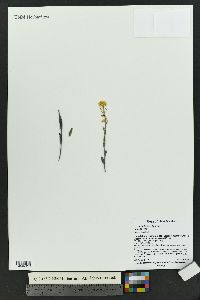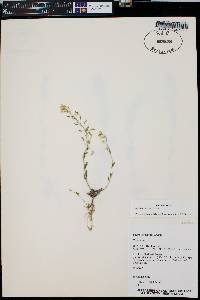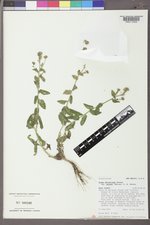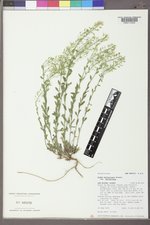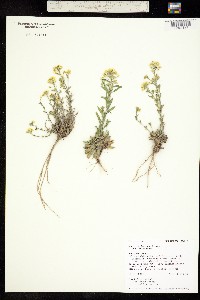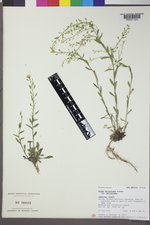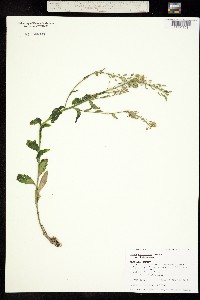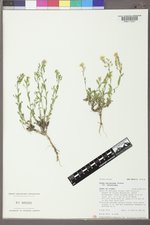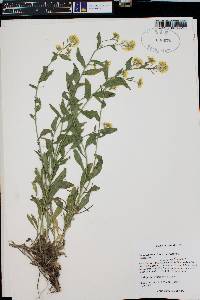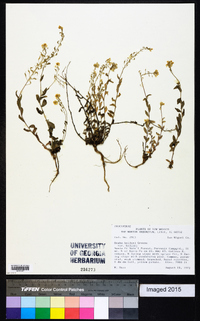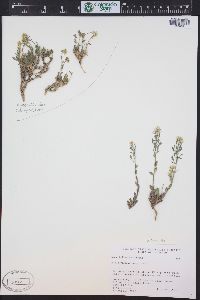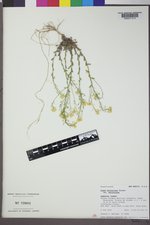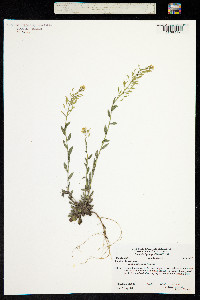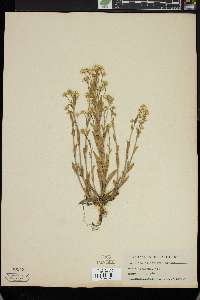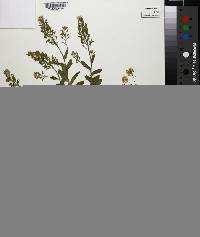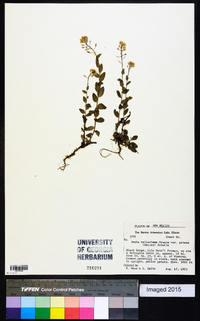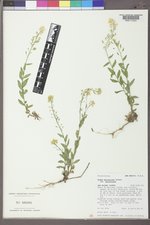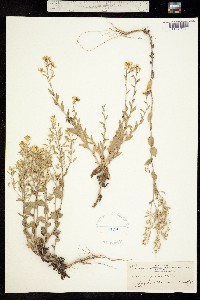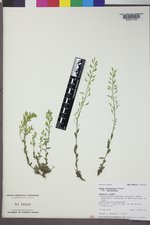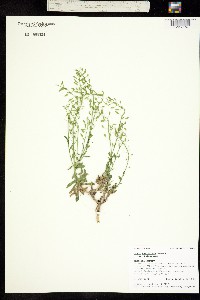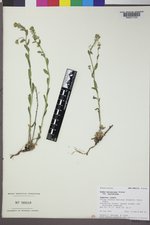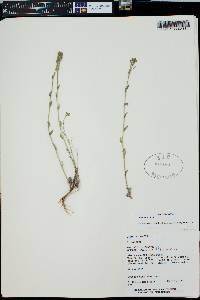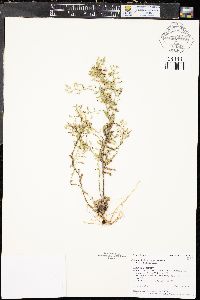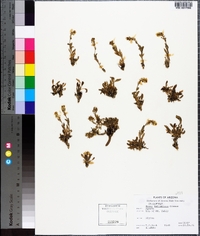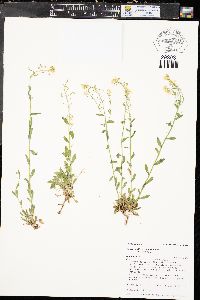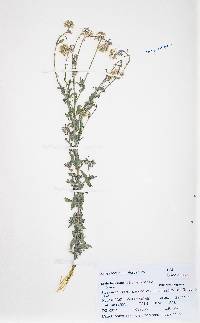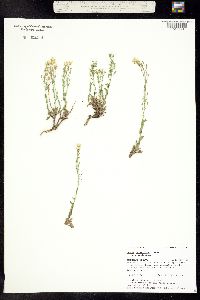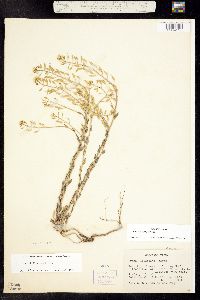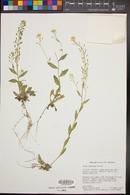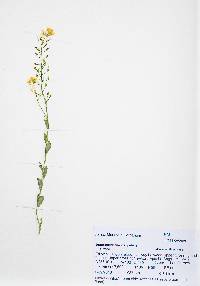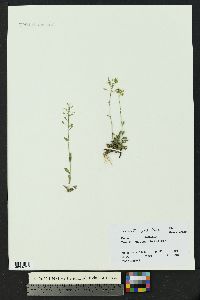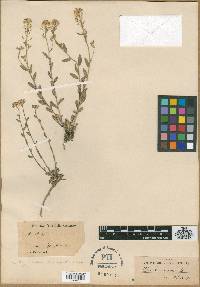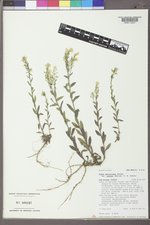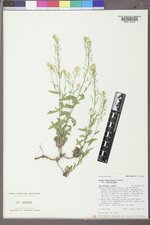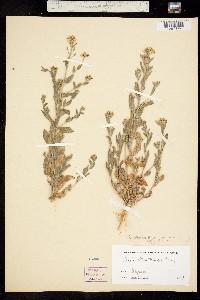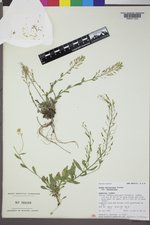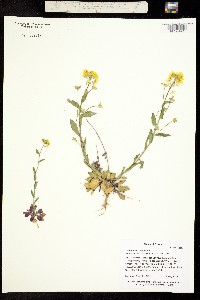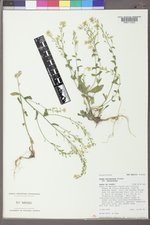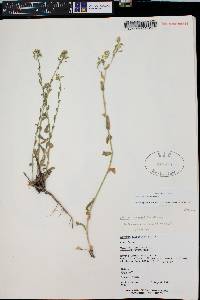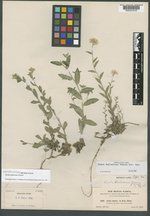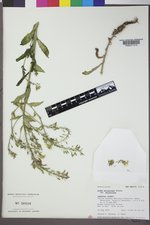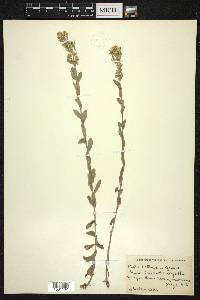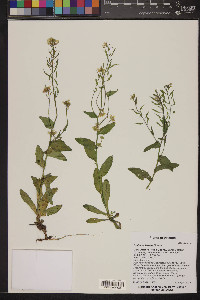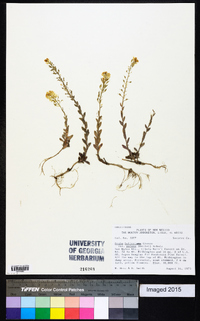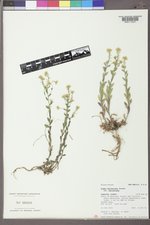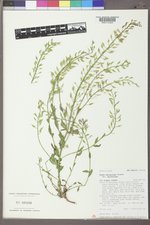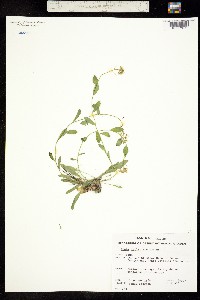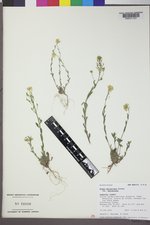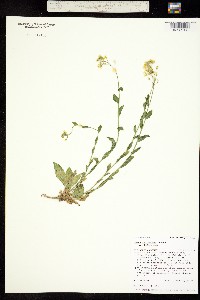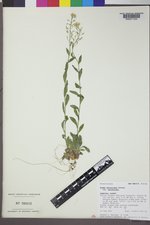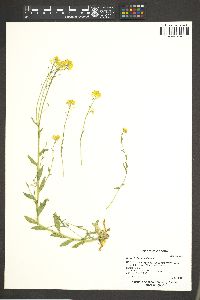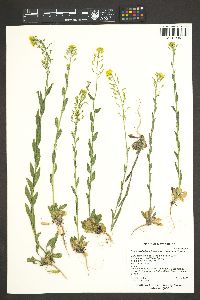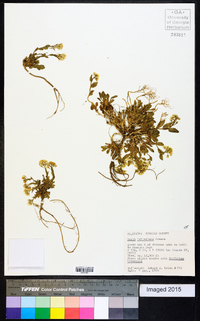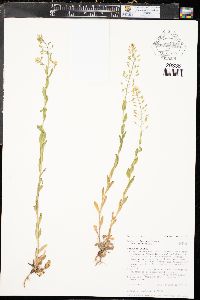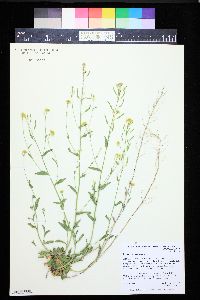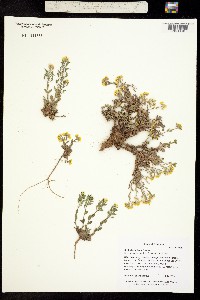
|
|
|
|
Family: Brassicaceae
Heller's draba, more...Heller's draba, Heller's Whitlow-Grass, Heller's whitlowgrass
[Draba aurea var. stylosa A.Gray, moreDraba hellerama Greene, Draba helleriana var. patens (Heller) O.E. Schulz, Draba helleriana var. potosiensis Rollins, Draba helleriana var. viejoensis Rollins, Draba neo-mexicana Greene, Draba neo-mexicana var. robusta A.Heller] |
Biennials or perennials; (short-lived); caudex simple or branched; not scapose. Stems branched, (0.1-)1.5-4.3(-5.1) dm, hirsute throughout, trichomes simple, 0.4-1.3(-1.8) mm, with short-stalked to subsessile, 3-5-rayed ones, 0.2-0.4 mm, (some slightly coarser, 2-rayed). Basal leaves rosulate; petiolate; petiole base ciliate or not; blade oblanceolate to obovate, 0.9-4.1 (-5.2) cm × 2-7(-10) mm, margins entire or dentate, surfaces pubescent, abaxially with stalked, cruciform, and fewer 3-5-rayed trichomes, 0.1-0.6 mm, adaxially with cruciform and simple trichomes, 0.4-1.3 mm, and smaller 2-rayed ones. Cauline leaves (8-)12-31(-43); sessile; blade ovate to lanceolate or oblong, margins usually dentate, rarely subentire, surfaces pubescent as basal. Racemes 10-52(-83)-flowered, usually ebracteate, rarely proximalmost 1 or 2 flowers bracteate, elongated in fruit; rachis not flexuous, pubescent as stem. Fruiting pedicels horizontal to divaricate-ascending, straight or slightly curved upward, 4-10(-13) mm, pubescent as rachis abaxially, glabrous adaxially. Flowers: sepals oblong, 2.5-4 mm, pubescent, (trichomes simple and stalked, 2-rayed); petals yellow, oblanceolate, 5-7 × 1.5-2.2 mm; anthers oblong, 0.5-0.8 mm. Fruits (not appressed to rachis), lanceolate to ovate or oblong-lanceolate, slightly to strongly twisted or plane, flattened, 5-15 × 2-3.5 mm; valves puberulent, trichomes simple and subsessile, 2(-4)-rayed, 0.03-0.25(-0.8) mm; ovules 14-28 per ovary; style (1-)1.5-3.5 mm. Seeds oblong, 1-1.3 × 0.6-0.8 mm. 2n = 18. Flowering Jun-Sep. Oak and pine-fir woodlands, aspen groves, rocky meadows; 2100-3600 m; Ariz., Colo., N.Mex.; Mexico (Nuevo León). Draba helleriana is highly variable and was divided by C. L. Hitchcock (1941) into four varieties. For a discussion of those and the circumscription of the species, see I. A. Al-Shehbaz and M. D. Windham (2007).
FNA 2010, Kearney and Peebles 1969, McDougal 1973 Duration: Perennial Nativity: Native Lifeform: Forb/Herb General: Herbaceous biennials to perennials, to 40 cm tall, stems 1-several arising from a caudex, branching above, leafy to the inflorescence, herbage hirsute throughout, trichomes simple, cruciform or with with 3-5 rays. Leaves: Basal leaves few from a basal rosette, petiolate, oblanceolate to obovate, 1-4 cm long, 2-7 mm wide, margins entire to dentate, cauline leaves alternate, sessile, oval, lanceolate, or oblong, 1-6 cm long, margins entire or shallowly dentate, blade surfaces pubescent. Flowers: Yellow, petals oblanceolate, pubescent to glabrous, 5-7 mm long, and 1.5-2 mm wide, sepals oblong, 2.5-4 mm long, pubescent, styles 1-3.5 mm long, flowers borne in dense racemes of 10-52 or more, these without bracts, the racemes becoming elongate, 4-10 mm long, horizontal and divaricate-ascending in fruit. Fruits: Strongly compressed silicles, elliptic-lanceolate, 5-15 mm long and 2-3.5 mm wide, slightly to strongly twisted or plane, flattened, pubescent, the trichomes mostly 2-rayed, fruiting pedicels erect to ascending. Seeds oblong, roughly 1 mm long and wide, n Ecology: Found in oak and pine fir woodlands, aspen groves, rocky meadows, from 7,000-12,000 ft (2134-3658 m); flowering June-September. Distribution: Colorado, New Mexico, Arizona; Mexico. Ethnobotany: The plant was made into a drink and taken when not feeling well, a decoction of leaves was taken for bad cough, sore kidney or gonorrhea, and the whole plant was used as a ceremonial emetic. Synonyms: Numerous, see Tropicos Editor: LCrumbacher 2011 Etymology: Draba comes from the Greek drabe for "sharp" or "acrid" and referring to the burning taste of the leaves which supposedly had a medicinal value as a poultice, while the meaning of helleriana is unknown. |
|
|
|
This project was made possible in part by the Institute of Museum and Library Services [MG-70-19-0057-19].
Powered by Symbiota

